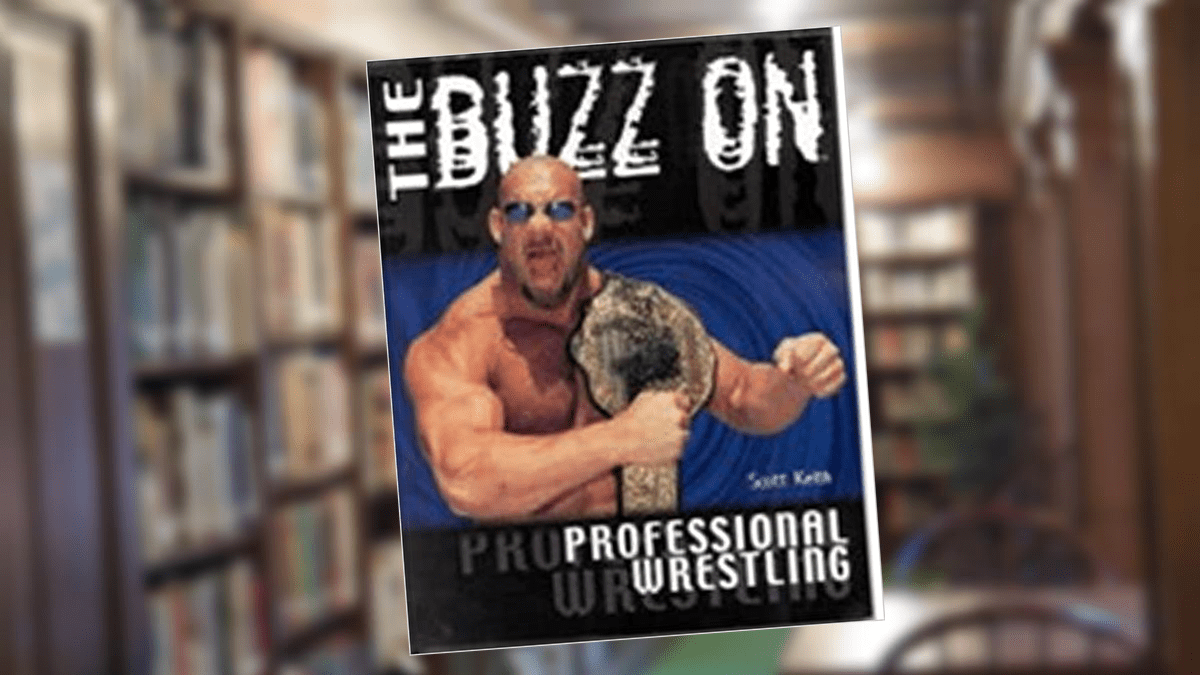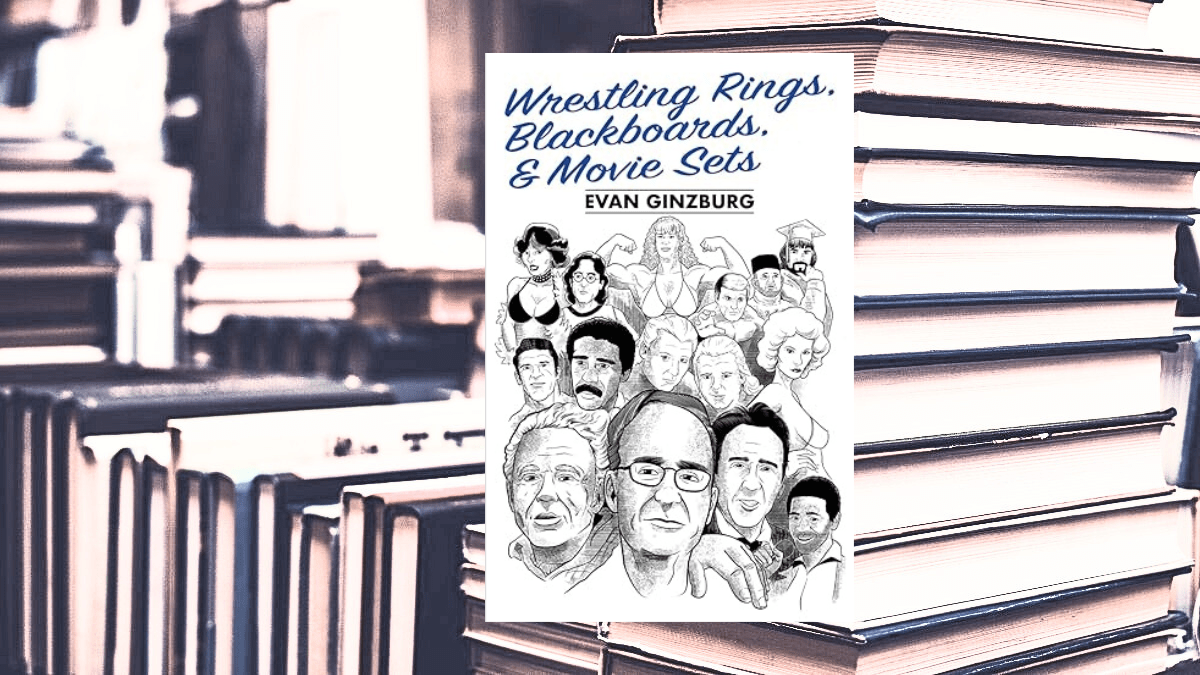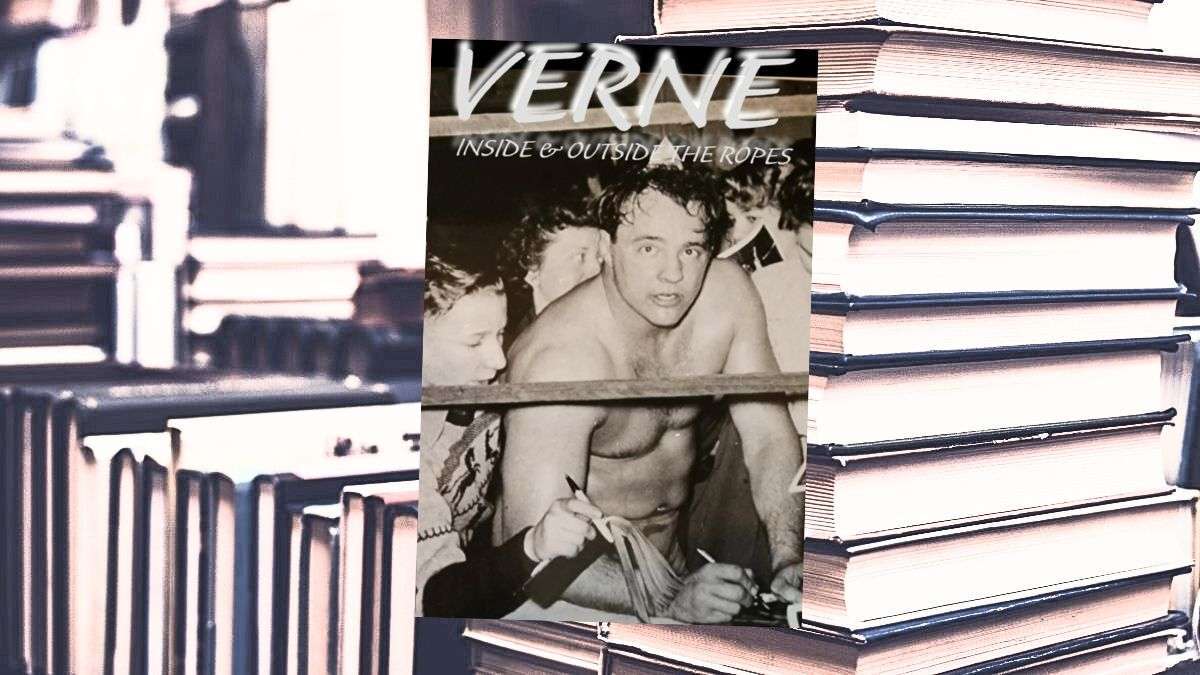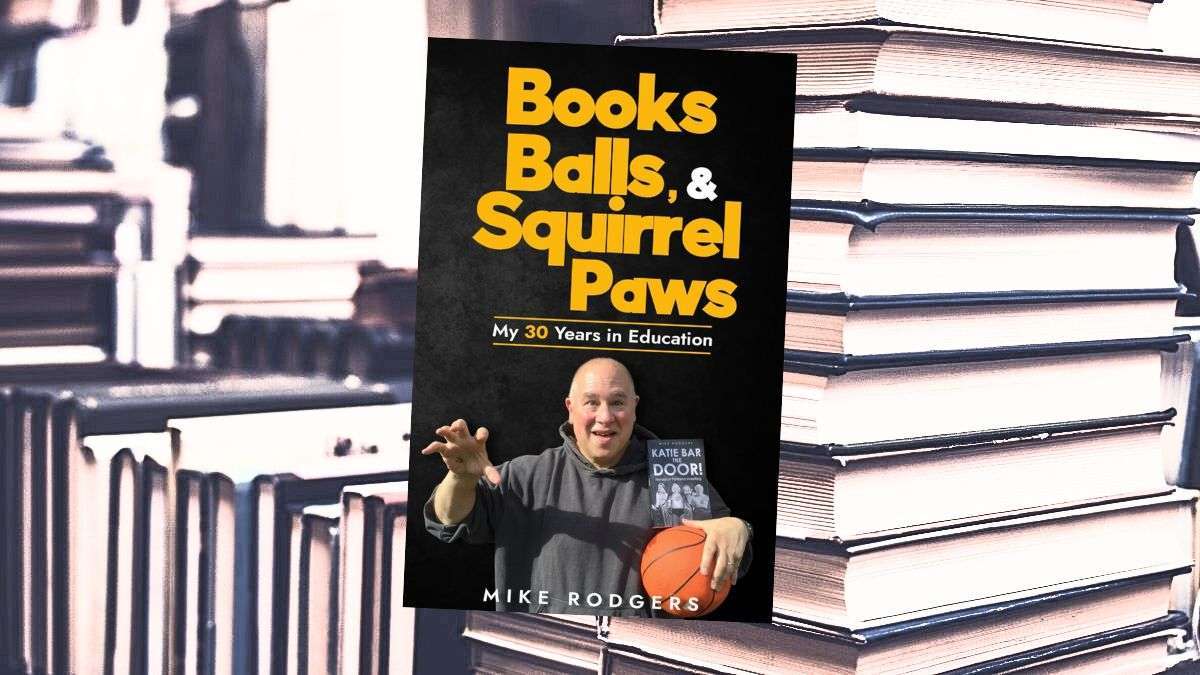SLAM! Wrestling is excited to offer you an excerpt from the upcoming paperback book from Lebhar-Friedman Books called The Buzz on Professional Wrestling. Here’s their sell line:
Professional wrestling. Fake? Tell that to those who’ve been body-slammed, piled-driven, or cracked over the head with a “steel” chair. Okay, maybe, wrestling is fake, but The Buzz on Professional Wrestling isn’t. From old timers like Gorgeous George and Bruno Sammartino to new hotshots like the Rock, Triple H, and Goldberg, from alliances and counter alliances like DX and nWo, from babes like Chyna to bimbos like Kimberly, The Buzz on Professional Wrestling by Scott Keith is your private pay-per-view.
Excerpted chapter:
WRESTLING HISTORY
By Scott Keith
While it can be argued that nearly everything in wrestling that has ever happened or ever will happen can be traced back to the sport’s origins in the late 1800s (and even more primitive origins since the dawn of man), it’s often hard to substantiate anything said from before 1960 or so due to the notoriously fluid state of the “truth” in wrestling and the general lack of records on the part of those involved.
There are, however, a few things about wrestling’s wonder years that we do know for certain:
1) There is no point in the history of wrestling where you can nostalgically look back and say that “it wasn’t fake.” It was always predetermined, but it used to be much more purely athletic and lacking in story lines, so the illusion of realism was easier to create. “Lou Thesz loses to Wilbur Snyder” was pretty straightforward, and all the motivations for the next show stemmed from the wrestling in the previous one. Thesz lost, so now he wants revenge. QED. If you really feel like going back far enough, you could say that the earliest professional matches with legitimate Olympic stars like George Hackenschmidt, at the turn of the century, were likely “real,” but then they also lasted two or three hours and featured long stretches with both men lying on the mat in a headlock, so it’s somewhat of a moot point to begin with. Suffice it to say that by 1925, when Stanislaus Zbyszko won the World title against the wishes of the promoter, “fake” aspect of the sport was already ingrained enough that this burst of reality was, indeed, a rare occurrence.
2) The first time that there was a real and tangible World Heavyweight title in pro wrestling was 1948, with the formation of the National Wrestling Alliance (NWA), which had the support of dozens of local promoters around North America. Claims are frequently made by the remnants of this once-great organization today about that title dating back to 1904, but this is roughly on par with Hollywood claiming that Braveheart is legally binding proof of William Wallace’s actions four centuries ago-merely a fanciful invention of the imagination of the creators, and nothing more.
3) Pro wrestling was absolutely not staged in the bingo halls and smoky bars that some would have you believe it was prior to the early ’80s. In fact, the WWF themselves released tapes on their Coliseum Video label showing old matches held in the ’60s or earlier, featuring arenas holding upwards of 30,000 people without the benefit of “sports entertainment” to fill them. The “smoky bars” line (fed to the press on a seemingly daily basis) was an invention of the early ’90s, when the WWF was going through a very rough financial period and was reduced to doing the wrestling equivalent of barnstormin — minor-league hockey arenas, convention centers, and other humble venues — and thus needed a convenient comparison point. And so the excuse of “Sure, it looks bad now, but even 10 years ago this company was doing bingo halls….” was born. Hulk Hogan, who is often heralded as the savior of wrestling from such small beginnings, was himself on the undercard of a show in 1982 that drew more than 50,000 people to New York’s Shea Stadium to see Bruno Sammartino face rival Larry Zbyszko. And the “Hogan and the WWF saved wrestling” argument doesn’t even take the influence of Japan into account, where tens of thousands of people flocking to see wrestling was a regular occurrence before any of them had even heard of Hogan.
With those notions out of the way, let’s talk about the NWA. Pretty much everything that ever happened up until the 1990s can be related to that organization.
In this age of having only two major promotions (World Championship Wrestling and the World Wrestling Federation), it’s hard to fathom, but before 1948 there used to be dozens of different promotions, manned by an equal number of promoters, covering just about every square inch of America once wrestling got hot after the Great Depression.
No problem, more money for everyone, right? Right-up until a point. Today It’s second nature in wrestling, or even boxing, for the focal point of a match to be the title at stake < the right to say that one man is better than the other and have the belt to back it up. It’s a very manly thing.
However,”Southeast Georgia mid-heavyweight champion” just didn’t have that money-making ring to it, and further, it didn’t have the kind of scope that the sheer bombast of wrestling pretty much demands by itself. So in the very early part of the century, a lot of promoters came to the exact same conclusion at the same time: We need a world champion. Trouble is, all of them started claiming that their champion was the one, leading to situations like a promoter in San Francisco claiming his guy was the world champion, despite that champion never having left San Francisco! This was fairly common, happening all over the country.
A note on world titles before we go any further: It is generally accepted that there are five titles in wrestling as of the year 2000 that are true world titles: The WWF championship, the WCW World title, the ECW World title, All Japan’s Triple Crown, and New Japan’s IWGP title. Any other claims to a world title at this point are dubious at best. The WWF does not refer to theirs as a world title-the kayfabed reason is that “World Wrestling Federation World champion” is redundant. The true reason is that they just like to be pretentious and hold their title above the rest. Whatever the reason, wherever the WWF is concerned in this book the terms “WWF title” and “World title” are considered interchangeable.
Some of the individual promotions’ titles were generally accepted as bigger than others, mainly because the people who held them had more drawing power. Former weightlifting champion George Hackenschmidt brought instant credibility to his claim as a champion, as did such major stars as Ed “Strangler” Lewis. The problem was not merely one of credibility, it was actual legitimacy of the title itself. It was fine for the fans to think that Lewis was the only true champion, but what if he lost the title? Would that title retain the same legitimacy just because someone beat him for it, or would the result be in doubt enough that people would still consider Lewis to be the rightful champion, since it was a self-proclaimed title rather than a crowning by the promotion. This problem actually went on for a good 40 years before legal reasons solved it.
In 1947, several Midwest promoters attempted to get around the extremely strict anti-trust laws of the time by forming an alliance (instead of merging into one monopoly) and recognizing a single world champion between the various promotions. This uber-promotion became known as the National Wrestling Alliance (or NWA for short) and would last for more than 50 years as a major force in wrestling. The first champion as named by the NWA was (not coincidentally) group member Orville Brown, and the most widely accepted of the “other” world champions left was National Wrestling Assocation champion Lou Thesz. A match was scheduled between Brown and Thesz to unify the titles, but a car accident ended Brown’s career before that could happen and Thesz was awarded the NWA World title on November 25, 1949, his first of six.
Nearly every major happening that occurred between 1950 and the start of the “modern era” was because of something that the NWA did.
By the late 1950s, other promoters had aspirations of covering the kind of area that the NWA did. The only major strongholds of wrestling not covered by the NWA at that point were the northern regions (which were in kind of a tenuous love-hate partnership with the NWA) and the Northeast (which were ruled unquestionably by Toots Mondt and Vince McMahon, Sr., who in turn could be called faithful NWA members in the same sense that Frank Gifford could be called a faithful husband). The fact that McMahon controlled the all-important New York market (and specifically Madison Square Garden) was a sore spot that haunted the NWA for years to come.
The first real sign of trouble with the NWA’s “undisputed” world title came in 1957, as Eduardo Carpentier defeated Lou Thesz to win the belt in a best-of-three falls match (the standard for title matches at that time). However, one of the falls was decided on a DQ, so one group of NWA Promoters chose not to recognize that title switch, while another group (led by Nebraska promoter Wally Karbo) chose not only to recognize Carpentier, but to continue recognizing that claim when Minnesota amateur wrestling legend Verne Gagne won the title from him in 1958. The situation worsened until finally Karbo’s group (led, not coincidentally, by Gagne himself) split off in dramatic fashion to form the American Wrestling Association (or AWA for short), the first major challenger to the NWA’s dominance of wrestling in America. Verne Gagne was given the first AWA World title, shocking no one. The AWA lasted some 40 years before folding in 1991 for monetary reasons.
A more dramatic and earthshaking change came when the NWA in the early ’60s put their title on Buddy Rogers, who until that point had been the exclusive property of Toots Mondt in the Northeast. Toots rarely let Rogers defend that title outside of his territory, and indeed, when the time came for Lou Thesz to win the NWA title back, Toots (and mastermind Vince McMahon) simply refused to recognize that switch, and (in wrestling terms) dared the NWA to do something about it. They didn’t, and in April 1963, they split from the NWA and formed the third major promotion in the U.S.: The World Wide Wrestling Federation, which today is the worldwide juggernaut simply known as the WWF. Rogers “won” the first WWWF World title in Rio de Janeiro in a tournament of which no footage exists (wink, wink), but his reign was short-lived, as heart problems forced him to drop that title to rising star Bruno Sammartino later that year in a 43-second match. Bruno would hold that title for an amazing eight years, selling out arenas all over the eastern seaboard.
While the upstart WWWF and AWA each boasted their own version of the World title, it was agreed by everyone outside the business that the NWA was the true class of the wrestling promotions. While the WWWF had a tendency to focus on showmanship and musclemen like Sammartino, and the AWA was essentially Verne Gagne’s one-man show, the NWA featured the best wrestling action and biggest stars night after night. In fact, the WWWF actually rejoined the NWA in the early ’70s during rough financial times and accepted a demotion of their world title to a lesser status. At the same time, however, something very big was happening that no one at the time really understood yet.
Vince McMahon’s son, Vince Jr., had been a part of the WWWF promotion since he was a teenager. His main role was on-screen announcer and interviewer, but he did some work behind the scenes as well in preparation to inherit the family business when his father passed away. Up until that point, there was rivalry between the promotions and old grudges carried from years past, but everyone generally behaved themselves. Vince, however, had different ideas.
When he assumed control of his father’s Capitol Sports Group in 1979, the first thing he did was buy out his father’s share completely, along with those of longtime employees Robert Marella (better known as Gorilla Monsoon) and Pat Patterson, then dropped the ‘Wide’ from the company name, officially renaming the promotion the World Wrestling Federation. He also dissolved the Capitol Sports Group and replaced it with Titan Sports Inc. By 1983, he found the laws and regulations of the NWA too restrictive, so he quit the group and started picking fights with NWA promoters over territorial rights. When he split from the NWA, he restored the WWF title to world title status, then took the title off six-year reigning champion Bob Backlund and put it on evil foreigner the Iron Sheik, in preparation for a change that would send shock waves throughout the business and forever alter the public perception of wrestling, making him millions of dollars in the process. You may have heard of the guy who he picked to lead the way – Hulk Hogan.
Take a trip through wrestling’s past and peer into its future with our time capsule of heroic highlights.
- 1873: The first masked wrestler appears, named The Masked Wrestler, setting a fashion trend for wrestling, which continues to this day.
- February 6, 1877: William Muldoon wins the Greco-Roman title by defeating the French champion, Christol.
- July 20, 1877: Wrestling’s first real star, George Hackenschmidt, is born in Dorpat, Russia.
- January 19, 1880: More than 3,000 fans come out to Gilmore’s Gardens (the site that would later become Madison Square Garden) to watch William Muldoon defend the Greco-Roman title. Muldoon beats Thebaud Bauer in a 2-of-3 falls contest.
- March 14, 1887: Evan “Strangler” Lewis defeats Joe Acton for the American Catch-as-Catch-Can championship in Chicago.
- March 2, 1893: “Strangler”Lewis unites the Catch-as-Catch-Can and Greco-Roman titles by defeating Ernest Roeber in a best of five falls match, with each fall alternating between catch and Greco styles.
- April 20, 1895: “Strangler” Lewis loses the American Heavyweight title to Martin “Farmer” Burns in Chicago.
- September 1896: 18-year-old George Hackenschmidt makes his wrestling debut.
- October 26, 1897: Dan McLeod beats Martin “Farmer” Burns, winning the American Heavyweight championship in Indianapolis.
- 1901: San Francisco hosts wrestling’s first tag team matches.
- November 7, 1901: Tom Jenkins wins the American Heavyweight title from Dan McLeod.
- December 26, 1902: In a best-of-three falls contest, Dan McLeod regains the title from Tom Jenkins.
- February 22, 1903: Tom Jenkins and Frank Gotch meet in the first match between the dominant wrestlers of the era. Jenkins wins.
- April 3, 1903: Tom Jenkins takes the American Heavyweight title back from Dan McLeod, winning two straight falls in a best-of-three falls match that lasts 91 minutes.
- January 27, 1904: Frank Gotch beats Jenkins for the American Heavyweight title, taking two straight falls.
- March 15, 1905: Tom Jenkins wins the American title for a record third time, beating Frank Gotch at Madison Square Garden.
- May 5, 1905: The first ever World Champion is crowned in North America as World Greco-Roman champion George Hackenschmidt defeats American champ Tom Jenkins. Hackenschmidt becomes the World Catch-as-Catch-Can champion, the title that later becomes the original NWA World title, now known as the WCW World title.
- April 3, 1908: In a match that is a prelude to modern day wrestling, Frank Gotch and George Hackenschmidt do battle at Chicago’s Dexter Park. Gotch fouls Hackenschmidt repeatedly throughout the match, and even oils himself down to make it difficult for his opponent to get hold of him. A frustrated Hackenschmidt leaves the ring, leaving Gotch with the world title.
- November 25, 1909: Frank Gotch and Stanislaus Zbyszko wrestle in a non-title contest. Gotch wins, but the contest generates heat between the two, marking the beginning of modern-day wrestling rivalries.
- September 4, 1911: Three years after the famous Gotch-Hackenschmidt match in Chicago’s Dexter Park, the two meet again. The match draws the largest ticket sales up to that point in wrestling history. Gotch wins due to Hackenschmidt’s knee injury.
- April 1, 1913: Frank Gotch retires from wrestling.
- July 4, 1915: Joe Stecher defeats Charlie Cutler to become the World champ.
- January 1916: More preludes to modern wrestling. Alex Aberg beats Waldek Zbyszko in the final of a two month international tournament. Early in the tournament, a wrestler named The Masked Marvel emerges from the crowd, demanding to participate.
- April 9, 1917: Joe Stecher and Earl Caddock compete in a best-of-three falls title match. Stecher wins the first fall, but Caddock takes the second. Stecher claims not to have been pinned, and walks away in frustration, giving the title to Caddock.
- December 13, 1920: Ed “Strangler” Lewis, the second “Strangler ” Lewis in wrestling, becomes world champion.
- April 1963: The WWWF (World Wide Wrestling Federation) is formed, with Buddy Rogers as its first champion.
- May 17, 1963: Bruno Sammartino becomes WWWF World champion.
- 1971: Bob Backlund wins the NCAA Division I 190-pound amateur wrestling championship.
- January 1971: After holding the WWWF title for seven years, Bruno Sammartino loses it to Ivan Koloff.
- May 18, 1971: Andre the Giant (much slimmer than in his WWF days) wins the annual IWA tournament.
- March 1972: New Japan Pro Wrestling is formed, with top stars Antonio Inoki, Osamu Kido, and Tatsumi Fujinami.
- September 16, 1972: Harley Race becomes the first NWA Missouri State champion.
- October 1972: All-Japan Pro Wrestling stages its first matches. The stars are Shohei “Giant”Baba, Motoshi Okuma, Akio Sato, and Mitsuo Momota.
- December 19, 1972: The Destroyer becomes the first American to compete in Japan on a regular basis after losing a match to Giant Baba. The match carried a stipulation, which caused Destroyer to wrestle full-time for All-Japan.
- February 27, 1973: Giant Baba completes a 10-match series of historic challenges. He goes 8-0-2 against Bruno Sammartino (a win and a draw), Terry Funk, Abdullah the Butcher, The Destroyer, Wilbur Snyder (a win and a draw), Don Leo Johnathan, Pat O’Connor, and Bobo Brazil.
- May 18, 1973: Bill Watts wins the NWA Georgia title from Mr. Wrestling II.
- May 24, 1973: Harley Race defeats Dory Funk, Jr. to win his first NWA World title.
- May 9, 1975: The first-ever WWWF title match held in Japan sees Bruno Sammartino put his title on the line against PWF champ Giant Baba in a champion against champion brawl. Fans are disappointed, however, as the match ends in no decision.
- November 8, 1975: Nick Bockwinkel ends Verne Gagne’s AWA title reign of more than seven years. Bockwinkel would hold the title for nearly five years.
- December 10, 1975: Terry Funk wins the NWA World title from Jack Brisco, making Terry and his brother Dory the only siblings to hold the NWA belt.
- April 26, 1976: Stan Hansen becomes famous for the clothesline as promoters claim the move broke Bruno Sammartino’s neck.
- May 24, 1976: Ric Flair beats Wahoo McDaniel for the Mid-Atlantic title.
- December 25, 1976: Ric Flair and Greg Valentine beat Gene and Ole Anderson for the NWA World tag titles.
- February 6, 1977: Harley Race defeats Terry Funk for the NWA World title in one of the best wrestling matches of the 1970s.
- April 30, 1977: “‘Superstar” Billy Graham defeats Bruno Sammartino for the WWWF World title in Baltimore. Graham held the belt for ten months. His flamboyant style influenced many up and coming wrestlers.
- September 26, 1977: Bob Backlund wrestles his first match in Madison Square Garden.
- April 1979: The World Wide Wrestling Federation drops the “Wide,” and becomes the World Wrestling Federation.
- July 1979: The first edition of Pro Wrestling Illustrated hits the newsstands. It is still considered one of the best publications about professional wrestling.
- July 8, 1979: Ric Flair defeats Buddy Rogers. Flair later uses aspects of Rogers’ persona, including his nickname (The Nature Boy) and his finishing move (the figure-four leglock).
- August 1979: Jack Tunney demonstrates his power as a promoter, getting AWA World champion Nick Bockwinkel to face WWF champ Bob Backlund in a cross-promotion battle. The match ends in a double countout.
- November 30, 1979: Antonio Inoki beats Bob Backlund for the WWF title in Japan.
- December 6, 1979: Backlund regains the WWF title from Inoki. The WWF never told the U.S. audience that Backlund lost the belt while out of the country.
- June 1982: Vince McMahon, Jr., buys out his father’s share in the WWF, setting off the modern era of sports entertainment.
- September 1983: The WWF begins broadcasting its matches on the USA Network.
- November 1983: The WWF signs top stars such as Hulk Hogan, Bobby Heenan, Gene Okerlund, and Roddy Piper.
- January 1984: The reign of Hulkamania begins as Hulk Hogan defeats The Iron Sheik for the WWF World title.
- March 31, 1985: The WWF holds its first WrestleMania event.
- May 10, 1985: The first Saturday Night’s Main Event airs.
- September 1985: Saturday morning cartoon Rock ‘n’ Wrestling appears and runs for almost two years.
- November 1985: WWF airs its first pay-per-view event, The Wrestling Classic.
- March 29, 1987: At WrestleMania III, Hulk Hogan becomes one of few wrestlers to ever body slam Andre the Giant.
- November 26, 1987: The first Survior Series airs on PPV.
- January 24, 1988: WWF airs its first Royal Rumble.
- February 1988: Andre the Giant ends Hulk Hogan’s first title reign of four years.
- October 1988: According to Forbes magazine, the WWF is listed as being worth $100 million.
- November 22, 1990: The Undertaker debuts at Survivor Series.
- June 1991: A drug policy is quickly formed in the WWF as ringside doctor George Zahorian is accused of selling steroids to wrestlers.
- July 1992: “Macho Man” Randy Savage admits to taking steroids in the past in a live interview.
- January 1993: The debut of Monday Night Raw.
- January 27, 1993: Superstar wrestler Andre the Giant dies of a heart attack.
- November 1993: Vince McMahon, Jr., is charged with steroid possession.
- June 1994: Hulk Hogan leaves WWF to go to WCW.
- 1995: “Stone Cold” Steve Austin signs with the WWF.
- April 1996: Mick Foley debuts on Raw.
- June 1996: “Stone Cold” begins his “Austin 3:16” gimmick after defeating Jake “The Snake” Roberts at King of the Ring.
- July 7, 1996: Hulk Hogan turns heel to join Kevin Nash and Scott Hall to form the nWo, declaring war on WCW.
- November 17, 1996: The Rock debuts at Survivor Series.
- November 1996: WWF receives negative publicity after Brian Pillman pulls a gun on “Stone Cold” Steve Austin.
- October 1997: Kane makes his debut during a Hell in a Cell match with Undertaker and Shawn Michaels.
- November 1997: DX officially forms with Chyna, Shawn Michaels, and HHH as the first members.
- November 1997: Bret Hart makes his final appearance in the WWF as Shawn Michaels and Vince McMahon, Jr., break from the script and cheat him out of the world title.
- November 1998: Former wrestler Jesse Ventura is elected governor of Minnesota.
- May 23, 1999: Owen Hart dies after falling from the ceiling during his entrance into the ring.
- June 1999: Sable quits the WWF and sues for $110 million.
- August 1999: Gov. Jesse Ventura makes a guest referee appearance at Summerslam.
- November 1999: Stephanie McMahon is duped into marrying HHH. The saga continues . . .




